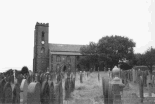Rossendale Branch Meeting Report 5th April 2019
We started the year with a new idea. We had asked members to give a ten-minute talk, with a tree sheet, on a family tree they were working on. It was taken up with enthusiasm and we shall be doing it again. They were all interesting and the “visual” part varied from a simple tree sheet, to a 20-foot long “wallpaper” presentation from Leo Turner. Branch member Jean Williams has worked out an extensive family tree, and found that Joe Sugg, a blogger and “Strictly” dancer, is a distant cousin.
In February local historian Lavinia Tod gave us a talk on the Grant family of Ramsbottom, who came down to Lancashire from Kirkcaldy in Scotland. They were poor, and had borrowed from family and friends to pay for their journey down on foot and cart. They made good in the cotton business, repaid the loans and ended up owning the big house now called the Grant’s Arms in Ramsbottom centre. They were known by Charles Dickens, who called them the Cheeryble brothers in “Nicholas Nickleby”.
The March meeting was completely different, as Oswaldtwistle character Jimmy Whittaker gave us a fascinating talk on, and display of, the results of his bottle-digging activities over the last fifty years. He took it very seriously, travelling all over the British Isles, making sure he sought the landowner’s permission, and properly reinstating any diggings. The things he has found have to be seen to be believed.
Our AGM was held in April, when as usual, the current committee members were re-elected. As in other branches, we really need new blood in the group, having over the last year lost several valuable members by the final certainty of life. These include Beatrice Stocks, our very efficient newspaper correspondent, and Rita Hirst, for a long time our branch secretary and an original member of the Rossendale Society for Genealogy & Heraldry, as the LFHHS used to be known.
Following the formal proceedings, Leo Turner gave us an illustrated talk on Angel Meadow, Manchester, one of England’s worst slums in Victorian times. At its height, its reported population was 30,000 in an area of 32 acres. Some of the buildings backed directly onto the River Irk, and sometimes it flooded, sending the heavily-polluted water into the cellar dwellings.
John Dalton (Chairman)




